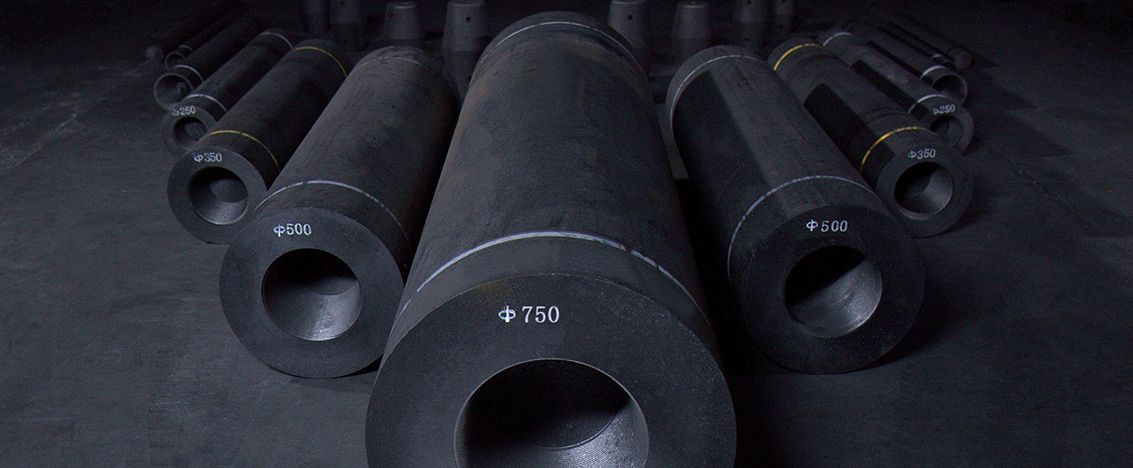(1) Natural graphite electrode. Natural graphite electrode is made of natural flake graphite as raw material. In the natural graphite to add coal asphalt, after kneading, molding, roasting and machining, you can prepare natural graphite electrode, its resistivity is relatively high, generally 15~20μΩ·m, the biggest disadvantage of natural graphite electrode is low mechanical strength, in the actual use of the process is easy to break, therefore, only a small number of small specifications of natural graphite electrode for some special occasions.
(2) Artificial graphite electrode. Using petroleum coke or asphalt coke as solid aggregate and coal pitch as binder, artificial graphite electrode (graphite electrode) can be prepared by kneading, forming, roasting, graphitizing and machining. The artificial graphite electrode belongs to the high temperature resistant graphite conductive material. According to the different raw materials and production technology, graphite electrodes with different physical and chemical properties can be prepared, and they can be divided into ordinary power graphite electrode, high power ink electrode and ultra-high power graphite electrode. The metallurgical carbon material industry is formed by the carbon material enterprises which produce the main varieties of graphite electrode.
(3) Oxidation resistant coated graphite electrode. The oxidation resistant coating graphite electrode is formed on the surface of the processed graphite electrode by “spraying and melting” or “solution impregnation” to achieve the purpose of reducing the oxidation consumption of graphite electrode. Because the coating makes the graphite electrode more expensive, and there are some problems in its use, so the use of antioxidant coated graphite electrodes has not been widely promoted.
(4) Water-cooled composite graphite electrode. The water-cooled composite graphite electrode is a conductive electrode used after the graphite electrode is connected with a special steel pipe. The double-layer steel pipe at the upper end is cooled by water, and the graphite electrode at the lower end is connected with the steel pipe through a water-cooled metal joint. The electrode holder is located on the steel pipe, which greatly reduces the surface area of the graphite electrode exposed to air, thereby reducing the oxidation consumption of the electrode. However, because the operation of connecting electrodes is troublesome and affects the production efficiency of electric furnaces, such water-cooled composite graphite electrodes have not been used.
(5) Hollow graphite electrode. Hollow graphite electrodes are hollow electrodes. The preparation of this product is directly pressed into a hollow tube when the electrode is formed or drilled in the center of the electrode during processing, and other production processes are the same as the ordinary graphite electrode process. The production of hollow graphite electrodes can save carbon raw materials and reduce the weight of lifting graphite electrodes. The hollow channel of the graphite electrode can also be used to add alloy materials and other materials required for steelmaking or to enter the required gas. However, the forming process of hollow graphite electrode is complicated, the saving of raw materials is limited, and the yield of finished product is low, so hollow graphite electrode has not been widely used.
(6) Recycled graphite electrode. Recycled graphite electrode can be prepared by using recycled artificial graphite scrap and powder as raw materials, adding coal pitch through kneading, molding, roasting and machining. Compared with the coke base ink electrode, its resistivity is too large, the performance index is poor, at present, only a small number of small specifications of recycled graphite electrode products used in the field of refractory production.
Post time: Apr-17-2024
